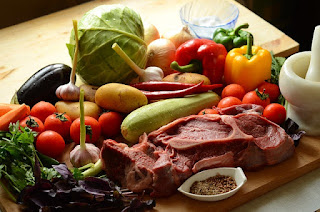
How to Embrace Green Living: A Simple Guide
Green living is all about making choices that are kind to the planet while also benefiting your health and well-being. But what does that actually mean? Let’s break it down in a way that’s easy to understand.
What is Green Living?
Green living involves adopting lifestyle practices that reduce your environmental impact. This means using resources more efficiently, reducing waste, and making choices that promote sustainability. It’s like giving Mother Earth a big hug with everything you do!
Key Concepts in Green Living:
- Sustainable Practices: These are actions that meet your needs without compromising the ability of future generations to meet theirs. Think of it like borrowing a book from a library—use it wisely, and it’s there for others to enjoy later.
- Energy Efficiency: This involves using less energy to perform the same tasks. Examples include switching to LED light bulbs or using energy-efficient appliances, which help reduce your carbon footprint.
- Waste Reduction: Instead of throwing away food scraps, you can compost them. This reduces the amount of waste going to landfills and turns organic waste into valuable soil.
- Eco-Friendly Products: Choose products made from sustainable materials. For instance, bamboo is a fast-growing plant used in everything from toothbrushes to flooring.
Real-Life Examples:
1. Zero-Waste Homes: Some people are taking green living to the next level by creating zero-waste homes. These households avoid sending any waste to landfills by composting, recycling, and reusing items as much as possible.
2. Community Gardens: In urban areas, community gardens are popping up. These spaces allow people to grow their own fruits and vegetables, reducing the need for store-bought produce and encouraging local food production.
3. Energy-Efficient Buildings: Many modern buildings are designed with energy efficiency in mind, incorporating solar panels, green roofs, and efficient insulation to minimize energy use and reduce greenhouse gas emissions.
Green Living in Our Self-Sustainable City Project
In our self-sustainable city, green living is a cornerstone of our design. Each home is equipped with energy-efficient systems, including solar panels and water-saving fixtures. Our community spaces encourage composting and recycling, and our gardens are designed to provide fresh, local produce.
By integrating these practices, we not only reduce our environmental impact but also create a healthier, more vibrant community. We’re committed to showing that green living isn’t just a trend—it’s a way of life that benefits everyone.
What do you think about green living? Do you have any tips or questions? Share your thoughts in the comments below!
![Self-Sustainable City - Ramakrishna Surathu [Official Website]](https://blogger.googleusercontent.com/img/a/AVvXsEivh2bAyNCG-DxYf4p_lHLcFQx1i8MvbBv91UgzKqAFrNMhT8xW-fwxgNJTdtojgb9aYXiG9EdNYLo8tNmtaakyq-zmnaCeeUGMdpvJ8iOaVzd2tSKEC2UrUXzFJa952LPF-OngfPenpbFOj7b8AcbYtPGSng6xbGr-_NwEIRpXZg_QdKLGRMGeg5pWmtaQ=s1280)


















